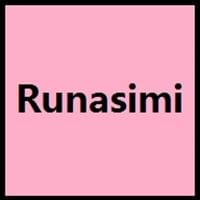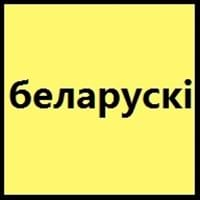Quechua and Belarusian
Countries
Argentina, Bolivia, Chile, Colombia, Ecuador, Peru
Belarus, Poland
National Language
Bolivia, Ecuador, Peru
Belarus, Gambia
Second Language
Not spoken in any of the countries
Poland
Speaking Continents
South America
Asia
Minority Language
Not spoken in any of the countries
Czech Republic, Lithuania, Ukraine
Regulated By
Not Available
National Academy of Sciences of Belarus, National Languages Committee
Interesting Facts
- One of the most widely spoken indigenous language in the America is Quechua.
- Quechua language has borrowed many words from Spanish.
- Since 1918, Belarusian has been the official language of Belarus.
- Belarusian include many loanwords from Polish language.
Similar To
Not Available
Russian and Ukrainian
Derived From
Not Available
Not Available
Alphabets in
Quechua-Alphabets.jpg#200
Belarusian-Alphabets.jpg#200
Writing Direction
Not Available
Not Available
Time Taken to Learn
Not Available
Hello
Rimaykullayki
dobry dzień
Thank You
Solpayki
Dziakuj
How Are You?
Allillanchu
Jak vy ?
Good Night
Allin tuta
Dabranač
Good Evening
Wuynas nuchis
Dobry viečar
Good Afternoon
Wuynas tardis
dobry dzień
Good Morning
Wuynus diyas
Dobraj ranicy
Please
Not Available
Kali laska
Sorry
Pampachaykuway
Vybačajcie
I Love You
Kuyayki
JA liubliu ciabie
Excuse Me
Pampachaway
Vybačajcie
Dialect 1
Ancash
North-Eastern Belarusian
Where They Speak
Peru
North-East Belarus
How Many People Speak
Not Available
Dialect 2
Huánuco
South-Western Belarusian
Where They Speak
Peru
South-West Belarus
How Many People Speak
Not Available
Dialect 3
Yaru
Middle Belarusian
Where They Speak
Peru
Middle Belarus
How Many People Speak
Not Available
Second Language Speakers
Not Available
Native Name
Qhichwa
Беларуская мова (Bielaruskaja mova)
Alternative Names
North La Paz Quechua
Belarusan, Belorussian, Bielorussian, Byelorussian, White Russian, White Ruthenian
French Name
quechua
biélorusse
German Name
Quechua-Sprache
Weißrussisch
Pronunciation
Not Available
Not Available
Ethnicity
Quechua
Belarusians
Origin
16th Century
18th century
Language Family
Quechumaran Family
Indo-European Family
Subgroup
Andean Equatorial
Slavic
Branch
Not Available
Eastern
Early Forms
No early forms
Old East Slavic
Standard Forms
Quechua
Belarusian
Language Position
Not Available
Signed Forms
Not Available
Not Available
Scope
Macrolanguage
Individual
ISO 639 6
Not Available
Not Available
Glottocode
quec1387
bela1254
Linguasphere
No data Available
53-AAA-eb < 53-AAA-e (varieties: 53-AAA-eba to 53-AAA-ebg)
Language Type
Living
Living
Language Linguistic Typology
Not Available
Not Available
Language Morphological Typology
Agglutinative, Synthetic
Not Available
All Quechua and Belarusian Dialects
Most languages have dialects where each dialect differ from other dialect with respect to grammar and vocabulary. Here you will get to know all Quechua and Belarusian dialects. Various dialects of Quechua and Belarusian language differ in their pronunciations and words. Dialects of Quechua are spoken in different Quechua Speaking Countries whereas Belarusian Dialects are spoken in different Belarusian speaking countries. Also the number of people speaking Quechua vs Belarusian Dialects varies from few thousands to many millions. Some of the Quechua dialects include: Ancash, Huánuco. Belarusian dialects include: North-Eastern Belarusian , South-Western Belarusian. Also learn about dialects in South American Languages and North American Languages.
Quechua and Belarusian Speaking population
Quechua and Belarusian speaking population is one of the factors based on which Quechua and Belarusian languages can be compared. The total count of Quechua and Belarusian Speaking population in percentage is also given. The percentage of people speaking Quechua language is 0.13 % whereas the percentage of people speaking Belarusian language is 0.11 %. When we compare the speaking population of any two languages we get to know which of two languages is more popular. Find more details about how many people speak Quechua and Belarusian on Quechua vs Belarusian where you will get native speakers, speaking population in percentage and native names.
Quechua and Belarusian Language Codes
Quechua and Belarusian language codes are used in those applications where using language names are tedious. Quechua and Belarusian Language Codes include all the international language codes, glottocodes and linguasphere.





